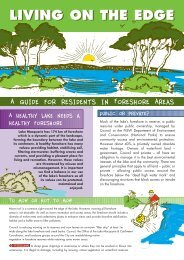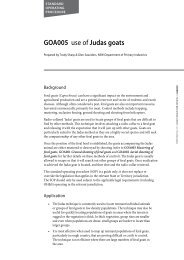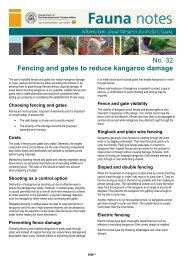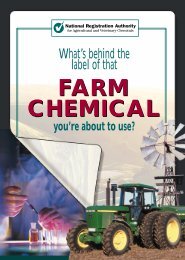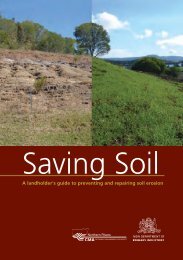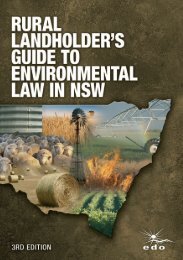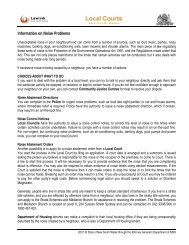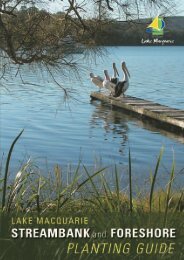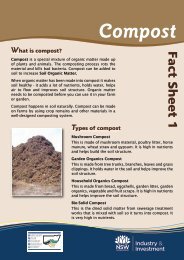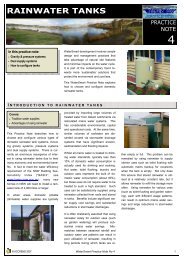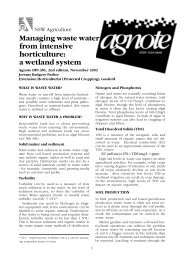Agricultural Fire Management Guidelines - Guide to Rural ...
Agricultural Fire Management Guidelines - Guide to Rural ...
Agricultural Fire Management Guidelines - Guide to Rural ...
You also want an ePaper? Increase the reach of your titles
YUMPU automatically turns print PDFs into web optimized ePapers that Google loves.
Section 2 BackgroundFuel<strong>Fire</strong> behaviour is infl uenced by three main fac<strong>to</strong>rs. These arefuel, weather and <strong>to</strong>pography. Consideration of these fac<strong>to</strong>rsis important when considering fi re management.Wildfi re can occur in any type of vegetation, such asgrasslands, trees, crops or shrubs. How hot a fi re burns andhow quickly it spreads depend on the size, quantity, type,arrangement and moisture content of the fuel being burnt.Fuel loadThe fuel load is the quantity of fuel per unit area. It iscommonly expressed as <strong>to</strong>nnes per hectare. Reducing fuelloads can help <strong>to</strong> protect assets from fi re and make fi reseasier <strong>to</strong> suppress.Fuel sizeFine fuels (less than 6 mm in diameter), such as leaves,twigs, grass and bark, dry out rapidly and burn quickly.Because fi ne fuels burn easily, they contribute most <strong>to</strong> theheat of a fi re front. Consequently, minimise the quantities offi ne fuels near key assets <strong>to</strong> minimise the risk of radiant heatand direct fl ame contact.Heavier fuels like branches and logs (greater than 25 mm indiameter) can also provide fuel for wildfi res. However, theyare slower <strong>to</strong> ignite than fi ne fuels and give off heat moreslowly.While heavy fuels do not contribute <strong>to</strong> the heat of the initialfi re front, they do need <strong>to</strong> be put out after the fi re front haspassed <strong>to</strong> prevent them being a continuing source of fi re.Drought conditionsWhen planning fi re management, consider the impact ofdrought and dry conditions. While grass paddocks tend<strong>to</strong> be heavily grazed in these situations, fi re managementstill needs <strong>to</strong> be undertaken as fi re can still travel acrosspaddocks with very short grass.During very dry conditions trees often shed leaves and theleaf litter dries out, increasing the amount of fuel available<strong>to</strong> burn in timbered areas, including plantations. Dry soilconditions associated with drought also increase the chanceof tree roots igniting. These fi res are diffi cult <strong>to</strong> suppress.Figure 3: Fine fuels less than 6 mm in diametercontribute most <strong>to</strong> the heat of a fire front6 On the Land: <strong>Agricultural</strong> <strong>Fire</strong> <strong>Management</strong> <strong><strong>Guide</strong>lines</strong>




